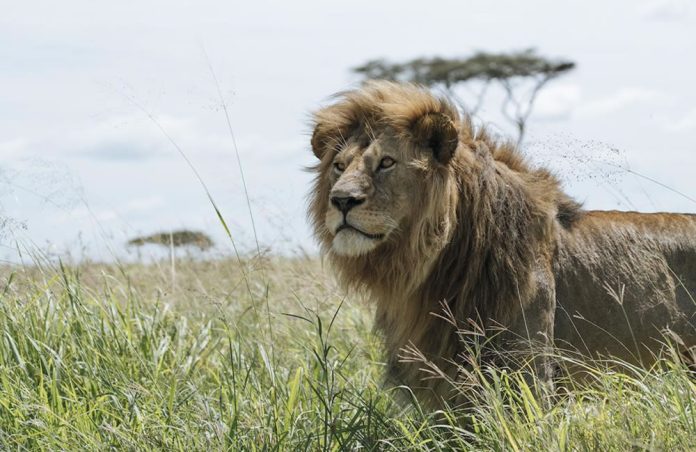It wasn’t part of the plan. We were merely supposed to sit in a safari jeep and cruise on a designated path through the sprawling Queen Elizabeth National Park in Uganda.
My group of Malaysian travellers were promised the abundant sights of hippopotamus, antelopes, kob, chimpanzees, buffaloes, elephants and baboons.
The ranger said that if we were lucky, we might even see tree-climbing lions, but conceded that chances were slim. Understandably, he didn’t want to raise our expectations.
This is, after all, Uganda, not Kenya or Tanzania where the safari is much bigger and has more animals. Basically, Uganda is always under the radar when it comes to African safari game park. But we certainly got more than we bargained for.
My travelling companion, Rong, must have super bionic eyes. While travelling on the dusty trail, with most of us drowsy in the afternoon heat, he suddenly asked the ranger to stop the vehicle. He thought he’d seen a lion in the distance.
None of us saw anything. But thanks to technology, I could snap a picture using my mobile phone. When I enlarged the picture, we could clearly see the head of a lioness, eyeing an unsuspecting animal close by. She was well camouflaged amidst the thick scrub and long grass.
We urged our ranger to drive down the slope and head towards that direction.
We were in luck, because after driving a short distance, we chanced upon the female lion. Her “meal” looked like a warthog, and it was still fresh meat.
There were no vultures or hyenas to pick on the leftovers yet. The ranger speculated that she was pregnant, trying to sound authoritative and knowledgeable, but we were thrilled out of our minds to bother listening.
The encounter was just too close and too spectacular. We could see her breathing heavily as her ears twitched to our presence, and of course, we saw her large, vigilant eyes.
She wasn’t perturbed as she sensed she wasn’t being threatened, and it helped, too, that she had just eaten.
She didn’t look intimidating, but we knew better than to push our luck. We were so close to her that we didn’t even need zoom lenses to capture this magical moment. Our handphones were good enough to take pictures and videos with.
She was a real beauty, and we instantly understood why lions are the symbols for power, aggression and might. However, the big cat displayed no intimidation tactics or growls of threat, and merely gazed at us.
Kob at QE Park Uganda
After being glued to the spot for a good 25 minutes, we decided it was time to leave this beautiful animal before we test her patience with our intrusion into her territory.
As we excitedly compared pictures and patted ourselves on the back, we had to tell the equally excited ranger to keep his hands on the wheel. He had earned his bragging rights, as he quickly called the other rangers to tell them what he had just seen. We were sure other vehicles would be headed in our direction.
But there was more excitement in this part of Uganda, although the 1,978sq km Queen Elizabeth National Park is lesser known than others. The park extends from Lake George in the north-east, to Lake Edward in the south-west and includes the Kazinga Channel, which connects the two great lakes.
It’s home to 95 mammal and more than 500 bird species, and the 32-km long Kazinga Channel is the habitat to the world’s largest concentration of hippos and many Nile crocodiles, which are easily spotted along the banks.
Elephants Catching a Drink at the Kazinga Channel, Uganda
I took a two-hour boat ride along the edge of the channel and saw some of the most amazing and incredible scenes I have ever witnessed in my life.
I saw the giant Nile monitor lizard, said to be one of the biggest lizards, along with a wealth of bird life. The rangers patiently pointed out the different species of the feathered creatures, telling us about their unique calls. These animals were in abundance along the river.
While Queen Elizabeth Park isn’t in the same league as Masai Mara in Kenya, or the Serengeti in Tanzania, it’s home to about 2,500 elephants, 5,000 hippos and more than 10,000 buffaloes.
According to writer Matthias Mugisha, the area was first declared a game reserve in 1906, to prevent unregulated hunting, but was later gazetted as a National Park in 1952.
“Animal species such as chimpanzees and more than 600 species of birds compose a section of the large animal varieties in the park.
“Nowhere in the country can one find a park dotted with numerous craters than this park,” he wrote.
Hippos at the Kazinga Channel
Then, there were the olive baboons. Unsurprisingly, we were advised to keep our windows shut when we met them.
There’s no way visitors to this place could ever miss them. They were walking in groups along the stretch of road heading to the park, even coming close to the lodges where tourists stay.
They were big and they looked mean, and no one forgets their glare! Seen in packs like that, they reminded me of the nastier-looking extras from the Planet of the Apes series of movies. We were rightfully advised not to feed or be friendly with them. While they may resemble humans, they’re as wild as they come.
“Named for their green-grey coats, Olive baboons (Papio anubis) are among the most wide-ranging of the Old World monkeys, found in a strip of 25 African countries that stretch along or near the equator, nearly coast to coast.
“They can live in groups of 15 to 150, and are made up mostly of females and their young. Over a half mile stretch of road, we probably encountered at least 80 or so; most didn’t seem as excited to see us as we were to see them, but quite a few played along, posing for photos before disappearing into the forest or, at the very least, like this trio, sitting and moping in the slight but steady rain,” according to the Piran Café site.
The visit to Uganda’s Queen Elizabeth Park was supposed to be the sideshow to our main event – seeing mountain gorillas at the nearby Bwindi Impenetrable National Park, where we tracked up the dense, volcanic mountains and its rough terrain to reach these gentle giants. This is the home of the world’s remaining mountain gorilla population.
But our chance encounter with the lion, which was nothing short of up close and personal, was equally exciting and memorable.






